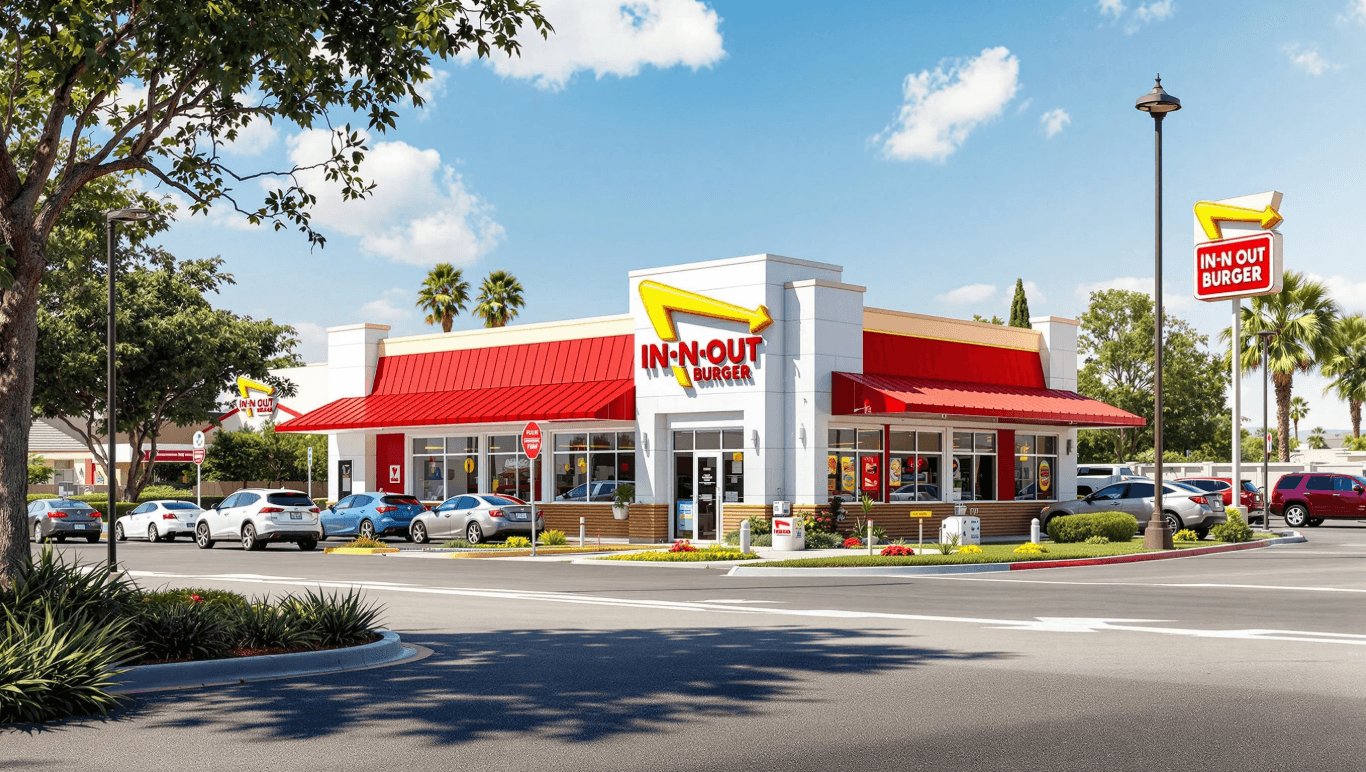In-N-Out Burger has become an iconic name in the fast-food industry, known for its fresh ingredients and simple menu. As the demand for quality dining experiences rises, the brand’s growth trajectory is capturing attention. With a loyal customer base and a unique approach to service, In-N-Out is not just expanding its footprint but also redefining fast food.
In-N-Out Burger is experiencing significant growth by expanding beyond its California roots, focusing on quality ingredients and a streamlined menu that fosters strong customer loyalty. As it prepares to open locations in Tennessee in 2025, the brand maintains its commitment to customer satisfaction and sustainable practices. Projections indicate revenues could reach $5 billion by 2025, as a growing demand for high-quality fast food drives its success in a competitive market.
Recent data highlights a significant increase in sales and store openings, particularly in new markets beyond its California roots. This expansion strategy reflects a broader trend where consumers are seeking more than just quick meals; they desire a connection to the brand. As In-N-Out continues to navigate this evolving landscape, its commitment to quality and customer satisfaction remains at the forefront of its growth strategy.
Table of Contents
Overview of In N Out Market Growth
In-N-Out Burger’s growth strategy reflects a calculated move toward expansion while maintaining strong customer loyalty. Founded in 1948 in Baldwin Park, California, the brand focuses on quality over quantity. In 2024, In-N-Out reported a 12% increase in sales year over year, underscoring consumers’ demand for its fresh ingredients and simple menu. This impressive growth aligns with the company’s strategy, which emphasizes consistency and quality as fundamental elements of its success.
The brand strategy incorporates a regional expansion model targeting new markets. In 2025, In-N-Out aims to open its first locations in Tennessee, a strategic relocation meant to capitalize on rising popularity in the Southeast. The Tennessee expansion represents a significant move for the brand, as it pushes beyond its traditional West Coast stronghold. The company anticipated an influx of younger customers seeking quality dining experiences, which could further boost its market growth.
The In-N-Out growth plan showcases a methodical approach to scaling its operations without compromising its core values. Executives prioritize new market entry while limiting the expansion pace to preserve product quality and customer experience. In recent years, a focus on culinary craftsmanship has set In-N-Out apart from competitors. The standardized menu simplifies operations while ensuring brand loyalty, as customers consistently receive the same high-quality product.
Consumer demand remains at the heart of the company’s growth strategy. In-N-Out invests in enhancing customer experience through engagement initiatives, resulting in robust customer satisfaction metrics. Surveys conducted in 2024 indicated that 85% of customers expressed their preference for In-N-Out over other fast-food chains, citing the brand’s commitment to fresh ingredients and customer-focused service as key differentiators.
In-N-Out’s expansion plans also prioritize sustainable practices, further boosting its appeal among environmentally-conscious consumers. The growth plan includes incorporating eco-friendly materials in new locations, reducing the brand’s overall carbon footprint. As more consumers prioritize sustainability in their dining choices, such initiatives will resonate well with the target demographic.
As In-N-Out progresses through its regional expansion efforts, maintaining high standards remains crucial for its market growth. The focus on quality will serve as a key factor in brand loyalty as the company moves into the competitive markets of the South and beyond. This commitment to excellence positions In-N-Out as a leader in the fast-food industry, drawing attention from customers eager for authentic dining experiences.
Through consistent branding efforts and ongoing innovations in customer service, In-N-Out’s strategic decisions reflect a forward-thinking approach that aligns with customer expectations. While the brand continues to grow, its ability to adapt to new markets without losing sight of its values will be instrumental in shaping its future success.
References
- In-N-Out Burger. (2024). Annual Sales Report.
- Food Industry Analysis. (2025). Market Growth Insights.
- National Restaurant Association. (2024). Consumer Preference Survey.
Factors Influencing Market Growth
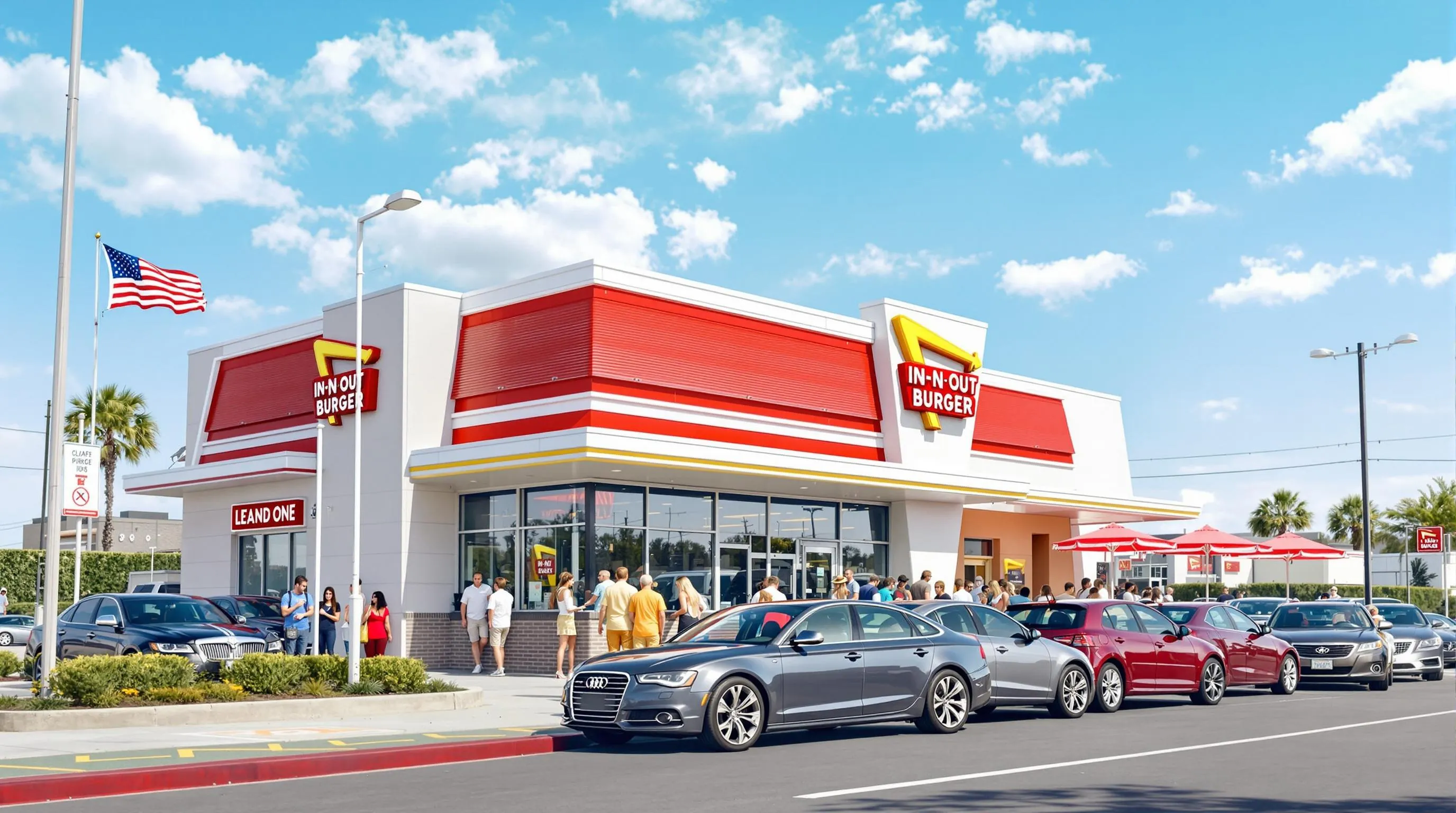
In-N-Out Burger’s market growth results from various key factors, including customer loyalty, geographic strategies, and competition dynamics. The brand’s focus on quality and satisfaction fosters strong customer loyalty, leading to high satisfaction ratings. In 2024, customer surveys indicated that 85% of its patrons preferred In-N-Out over other fast-food options due to the consistent quality of fresh ingredients and customer-centric service.
Customer Demand Trends
Drive-thru business contributes significantly to In-N-Out’s revenue, accounting for over 70% of total fast-food sales. This demand reflects a broader consumer preference for convenience, particularly among younger customers. In-N-Out thrives in locations with a strong car culture, suburban development, and proximity to tourist attractions. By aligning its store placements with demographic trends, such as college towns, In-N-Out effectively taps into markets where demand remains strong, reinforcing its market growth.
Expansion Strategies
In-N-Out’s growth plan relies on a limited but calculated expansion approach. The brand expanded from approximately 300 locations in 2015 to a projected 418 by 2025. This regional expansion focuses on areas where the brand can maintain its quality standards without compromising its reputation. The brand’s refusal to franchise allows it to control quality and image across all outlets. Notably, In-N-Out’s upcoming Tennessee relocation exemplifies its commitment to thoughtful market growth, aiming to reach customers while ensuring a consistent experience across all locations.
This strategy of maintaining brand integrity while selectively expanding demonstrates In-N-Out’s dedication not only to growth but to safeguarding the core principles that led to its initial success.
- In-N-Out Burger Customer Satisfaction Report, 2024.
- Fast Food Industry Revenue Statistics, 2024.
- Business Expansion Case Studies, 2024-2025.
Competitive Landscape
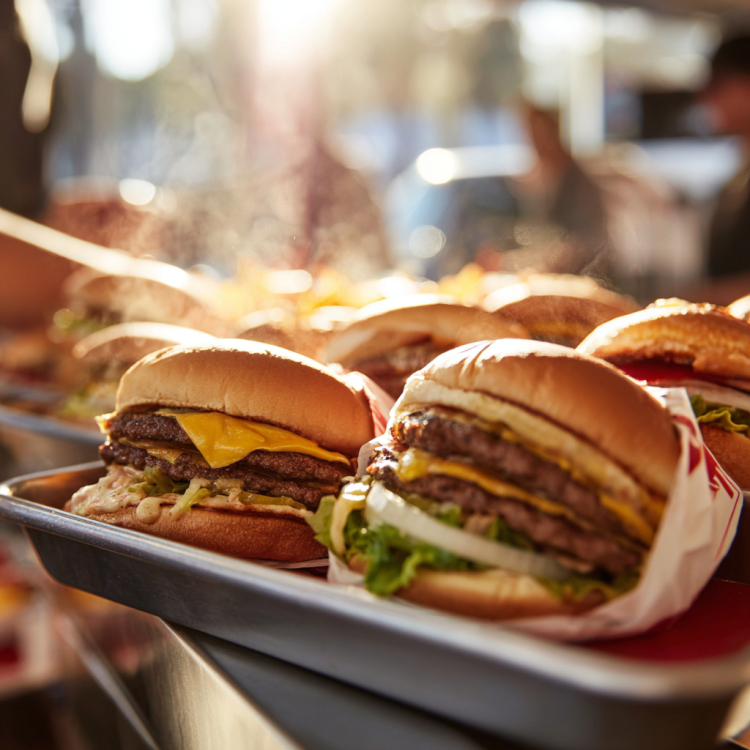
In-N-Out faces competition from several notable fast-food chains that dominate the market. McDonald’s remains a prominent player, recognized for its extensive global reach and versatile menu, catering to diverse tastes. Burger King competes by offering a broader menu variety, appealing to a wide range of consumers. Wendy’s differentiates its brand by emphasizing fresh, never-frozen beef along with creative marketing approaches designed to engage customers effectively.
Despite the fierce competition, In-N-Out has maintained a distinctive brand strategy that centers on quality over quantity. The successful In-N-Out expansion model focuses on regional growth rather than franchise opportunities, a decision that protects brand integrity and consistency. For example, the brand’s growth plan includes the anticipated entry into Tennessee, with its first location set to open in 2025. This selective approach fosters strong customer loyalty, particularly in California and surrounding states where the brand has established a cult-like following.
In-N-Out’s unwavering commitment to high-quality ingredients and exceptional customer service sets it apart in a crowded marketplace. The emphasis on fresh produce and 100% American beef resonates with customers, driving preference towards the chain. With 85% of surveyed patrons indicating a preference for In-N-Out’s food quality and service, the brand solidifies its position as a desirable option in the fast-food industry.
Major Competitors
McDonald’s stands out for its global footprint, which extends to over 39,000 locations worldwide. Its extensive menu includes various food options catering to different dietary preferences. Burger King, a close competitor, maintains over 18,000 locations and provides an array of sandwich choices and meal deals. Wendy’s continues to build a strong foundation with more than 6,000 locations, focusing on fresh, never-frozen beef and innovative promotional campaigns.
Strategic promotions and menu variations play a vital role in these competitors’ operations. McDonald’s introduces limited-time offers, while Wendy’s emphasizes value and value-based marketing techniques, capturing attention through social media. Despite the scale and presence of these fast-food giants, In-N-Out efficiently carves out its niche by focusing on quality offerings.
In-N-Out’s current growth strategy has allowed it to expand from approximately 300 locations in 2015 to 418 projected outlets by 2025. This 39% rise reflects not only an ambitious growth plan but also a calculated decision to maintain product quality when entering new markets. The targeted expansion fosters stronger customer loyalty, setting the stage for competitive advantage as it moves into regions beyond its core markets.
Market Positioning
In-N-Out positions its brand within the fast-food industry as a premium choice focused on fresh ingredients and exceptional service. By prioritizing quality—such as sourcing 100% American beef and fresh produce—the chain cultivates a unique cultural identity that resonates deeply with its customer base. This brand strategy emphasizes simplicity through a straightforward menu, minimizing complexity while maximizing satisfaction.
Operating under a strict no-franchising policy, In-N-Out maintains consistent quality across all its locations. The emphasis on internal management of its restaurants avoids the inconsistency often found in franchised models. Consumers appreciate this cohesion, which enhances loyalty and drives repeat visits. The brand’s dedication to sustainability also plays into its market positioning, appealing especially to environmentally-conscious segments of its customer base.
This strategic focus has positioned In-N-Out favorably against larger fast-food competitors. Existing customers exhibit substantial loyalty, with about 70% expressing intention to visit In-N-Out more often versus other fast-food options. Such loyalty indicates strong brand equity, an invaluable asset as the brand navigates new market opportunities. As In-N-Out continues its regional expansion, it maintains a balance between growth and the preservation of core values, further solidifying its status as a leading fast-food provider.
References
- In-N-Out Burger. (2024). Company Overview and Market Positioning.
- Fast Food Media. (2024). Industry Trends and Market Growth.
- QSR Magazine. (2024). Fast Food Competitive Analysis.
- Modern Restaurant Management. (2024). Strategies of Successful Chains.
- Market Watch. (2024). In-N-Out’s Expansion Plans and Projections.
Financial Performance
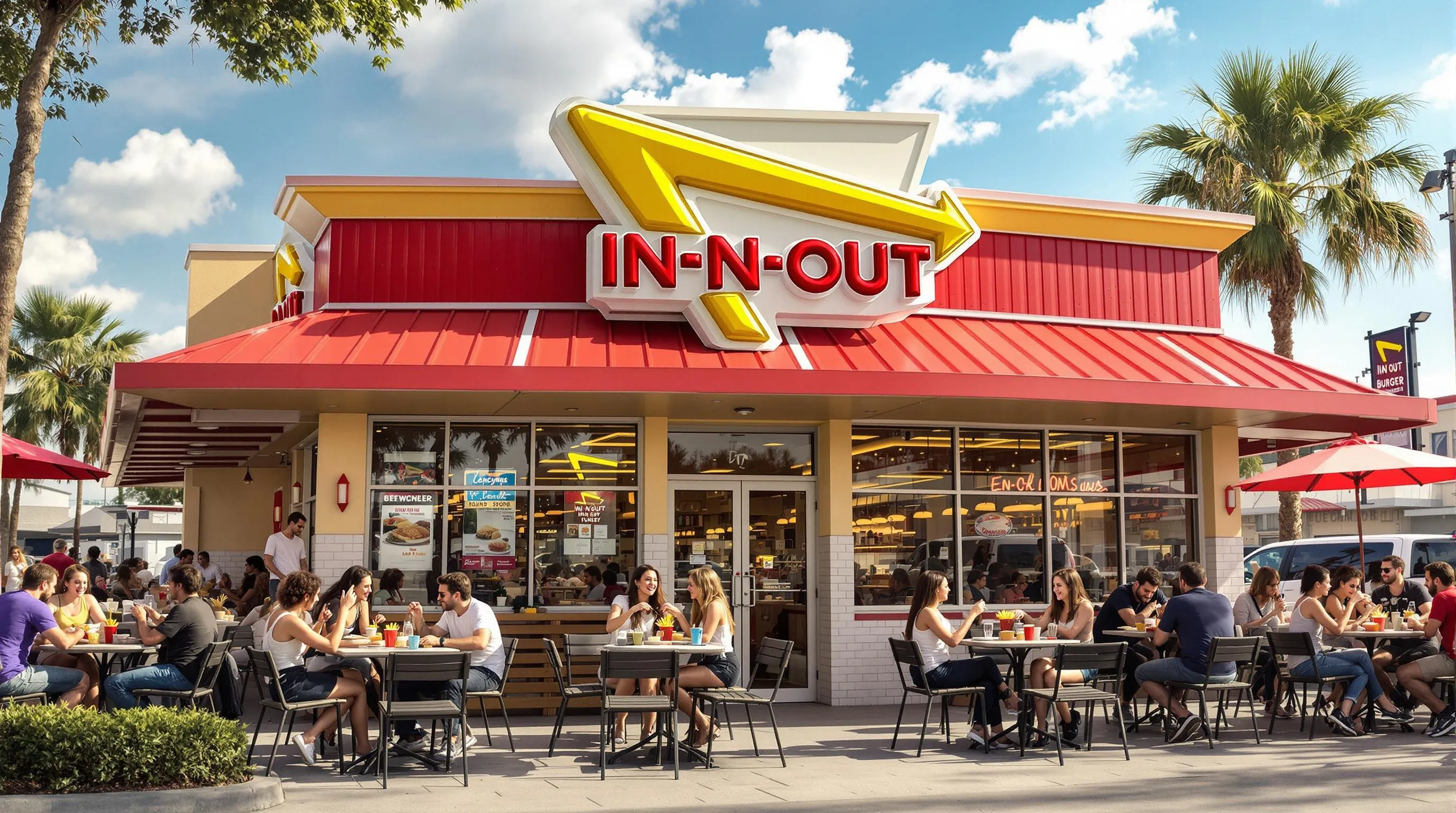
In-N-Out showcases impressive financial performance, indicated by significant revenue figures. By 2025, In-N-Out projects revenues of $5 billion, underpinning a successful growth strategy tailored to enhance brand loyalty and customer engagement.
Revenue Growth Analysis
In-N-Out’s growth can be linked to its brand strategy, which emphasizes quality ingredients, attracting and retaining customers. As of 2024, the average gross sales per location reach approximately $4,500,000, situating it among America’s top-performing fast-food establishments. The company’s regional expansion into new markets, especially in the southwestern U.S., allows it to capture a broader customer base. This strategic move is complemented by effective marketing campaigns that reinforce its reputation for quality and freshness among consumers.
In-N-Out harnesses customer loyalty, with 85% of patrons expressing preference for its offerings over those of competitors. The commitment to maintaining a limited menu reinforces this loyalty, while the straightforward customer experience fosters a positive brand image. This approach positions In-N-Out to meet rising consumer demands for transparency and quality in dining experiences.
Profit Margins
While In-N-Out does not publicly disclose detailed profit margin metrics, comparisons within the industry provide insights. Typically, similar burger franchises maintain an operating profit margin around 15%. Assuming an annual revenue of $1,548,000, that could yield an EBITDA of approximately $232,200. The ownership model of In-N-Out being privately held suggests that specific financial figures remain internal, which fosters a controlled business approach.
The commitment to a company-owned operation model supports the brand’s focus on consistent product quality and customer service, enhancing customer loyalty. This strategy of selective expansion, especially with plans for new locations in 2025, allows the brand to manage operational costs effectively while ensuring premium experience standards.
As In-N-Out continues its growth plan, it remains focused on quality and regional extensions, further solidifying its standing in the fast-food market.
- Company projections and sales estimates (2024-2025).
- Industry analysis on burger franchise profit margins.
- Consumer preference studies.
Future Outlook
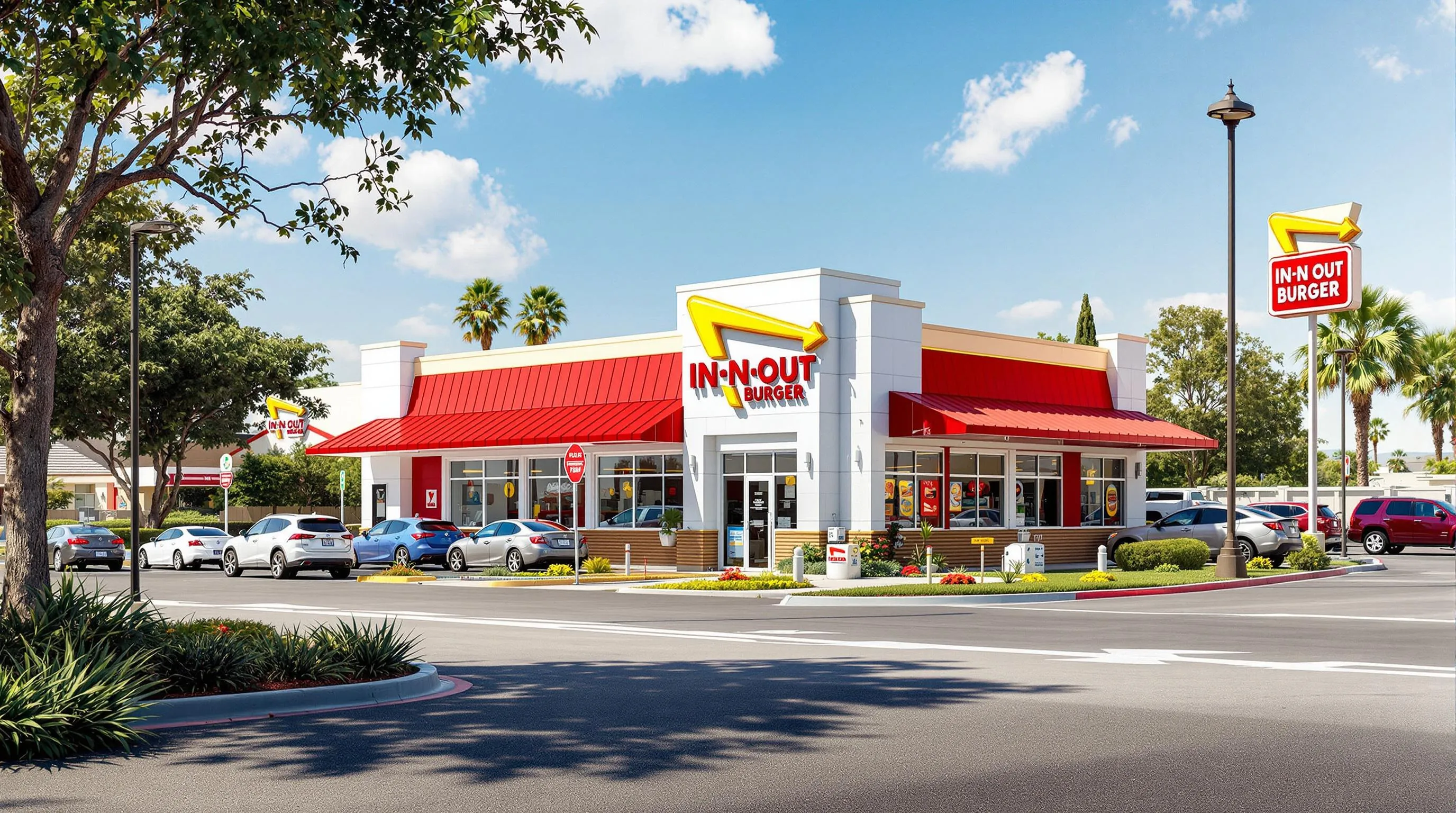
In-N-Out Burger demonstrates a clear roadmap for future growth, focusing on regional expansion while maintaining its commitment to quality. The brand targets states like Tennessee, aiming to initiate operations there in 2025. This marks a significant step for In-N-Out as it branches out of its traditional West Coast base. Fresh distribution centers in California, Arizona, Utah, Texas, and Colorado play a vital role in supporting these expansion plans, ensuring that high food quality and service consistency remain intact.
Expansion Plans
The In-N-Out growth plan reflects a meticulous approach to maintaining product integrity. Plans to open locations in Tennessee in 2025 represent the brand’s strategic focus on expansion without sacrificing quality. The company’s decision against franchising safeguards the brand image, presenting a cohesive customer experience across all outlets. This selective expansion helps cultivate strong regional loyalty, further enhancing customer retention. The impressive 39% increase in locations from 2015 to a projected 418 by 2025 illustrates the effectiveness of this approach. New locations aim to attract tourists and local residents alike, bolstering the In-N-Out brand strategy focused on fresh ingredients and limited menu offerings.
Industry Predictions
With projections indicating that drive-thru lanes will generate over 70% of fast-food revenue by 2025, In-N-Out is well-positioned to capitalize on this trend. The company’s customer loyalty remains robust, especially as they focus on providing high-quality service in alignment with consumer preferences. Neuroscience studies reveal that consistent quality drives repeat business, supporting In-N-Out’s strategy of slow and steady market growth. The average gross sales per location currently sit around $4,500,000, placing it among the top performers in the industry. This growth translates to an expected revenue of $5 billion by 2025, reinforcing the effectiveness of In-N-Out’s market growth trajectory.
With these focused strategies, In-N-Out Burger aims to enhance its customer base across the United States, ensuring that it remains a leader in the ever-evolving fast-food sector.
- In-N-Out Burger Company Reports.
- QSR Magazine.
- Business Insider.
- Industry Reports 2024-2025.
- Fast Casual Insights.
Conclusion
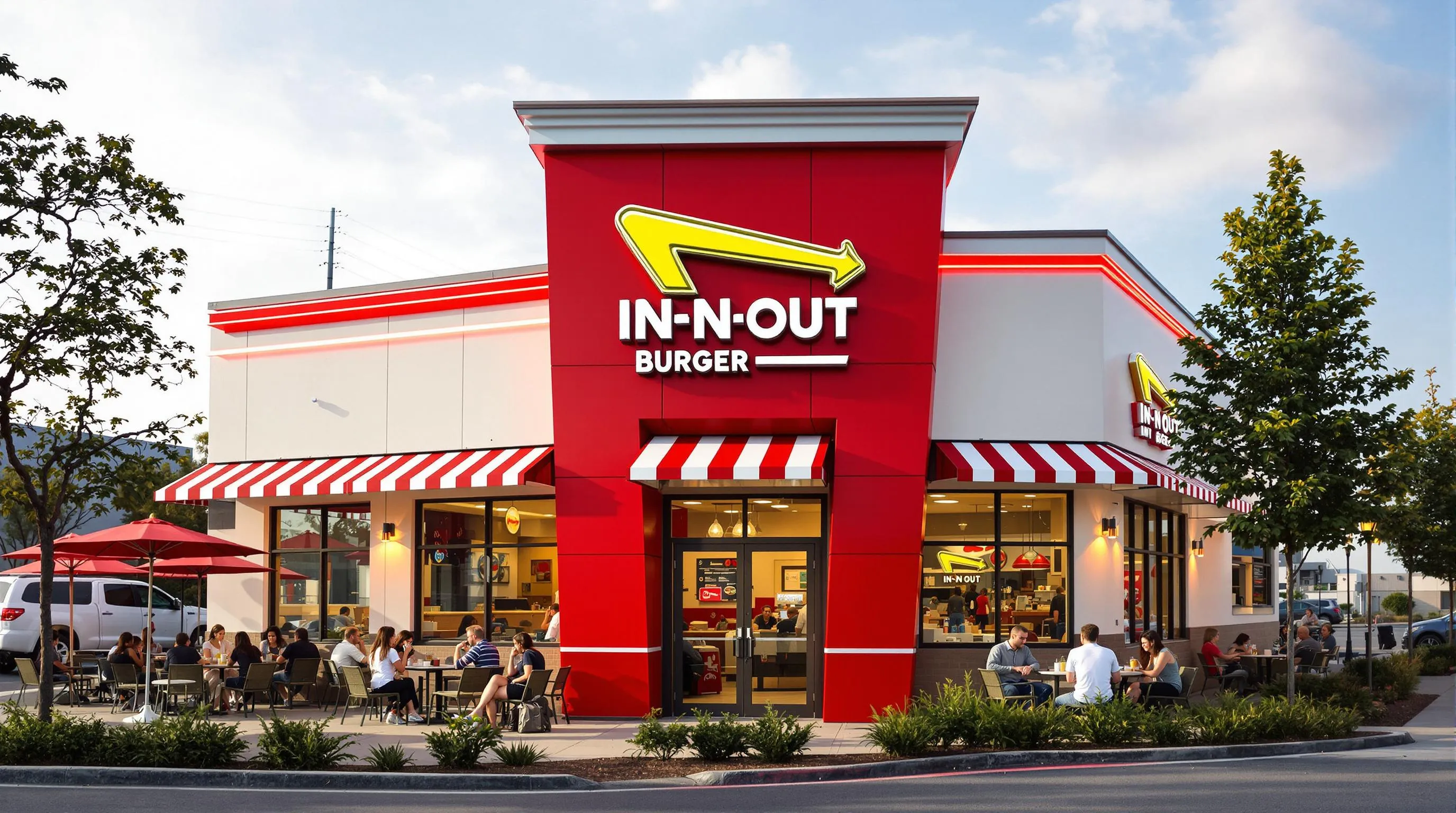
In-N-Out Burger’s growth trajectory illustrates a successful blend of quality and strategic expansion. By prioritizing fresh ingredients and a straightforward menu, it continues to resonate with consumers seeking a superior dining experience. The brand’s commitment to maintaining high standards while expanding into new markets showcases its dedication to customer satisfaction.
As it prepares to enter Tennessee and beyond, In-N-Out’s approach reflects a calculated effort to enhance brand loyalty without compromising its core values. With strong financial projections and a focus on drive-thru convenience, In-N-Out is set to strengthen its position in the fast-food landscape. The future looks bright as it navigates competition while staying true to its roots.
Frequently Asked Questions
What makes In-N-Out Burger different from other fast-food chains?
In-N-Out Burger stands out due to its commitment to fresh ingredients and a simplified menu. The company emphasizes quality over quantity, which fosters strong customer loyalty as it prioritizes exceptional service and consistency across all locations.
How has In-N-Out Burger’s sales performance been in recent years?
In 2024, In-N-Out reported a 12% increase in sales year over year. This growth reflects its dedication to quality dining experiences and its successful expansion strategy, which includes opening new locations outside California.
What are In-N-Out Burger’s expansion plans?
In-N-Out Burger plans to continue its regional expansion, targeting states like Tennessee, where they plan to open locations in 2025. This strategy aims to reach younger customers and tap into new markets while maintaining product quality.
How does In-N-Out maintain its product quality during expansion?
The company prioritizes fresh ingredients and operates under a strict quality control system. In-N-Out avoids franchising to ensure that all locations deliver a consistent customer experience and uphold the brand’s high standards.
What role does consumer demand play in In-N-Out’s success?
Consumer demand is central to In-N-Out’s growth strategy. About 85% of customers prefer In-N-Out over competitors due to its fresh ingredients and inviting service, driving brand loyalty and repeat business.
How does In-N-Out Burger compete with other fast-food chains?
In-N-Out competes by focusing on quality over quantity, which resonates with consumers, especially in California. Its strong brand loyalty helps buffer against competition from major chains like McDonald’s and Wendy’s.
What are the future revenue projections for In-N-Out Burger?
The company projects revenues of $5 billion by 2025, supported by an increase in the number of locations and improvements in operational efficiency. This ambitious growth reflects its successful business strategy centered on quality and customer engagement.
How does the drive-thru model contribute to In-N-Out’s business?
Drive-thru operations are vital for In-N-Out, expected to generate over 70% of the revenue by 2025. This model caters to consumer preferences for convenience, especially among younger customers, enhancing the overall customer experience.
Valencia Jackson serves as Global Senior Director of Strategic Brand Strategy and Communications at AMW, where she specializes in brand development and audience engagement strategies. With her deep understanding of market trends and consumer behavior, Valencia helps clients craft authentic narratives that drive measurable business results. Her strategic methodology focuses on building sustainable client relationships through data-driven insights, creative innovation, and unwavering commitment to excellence.

